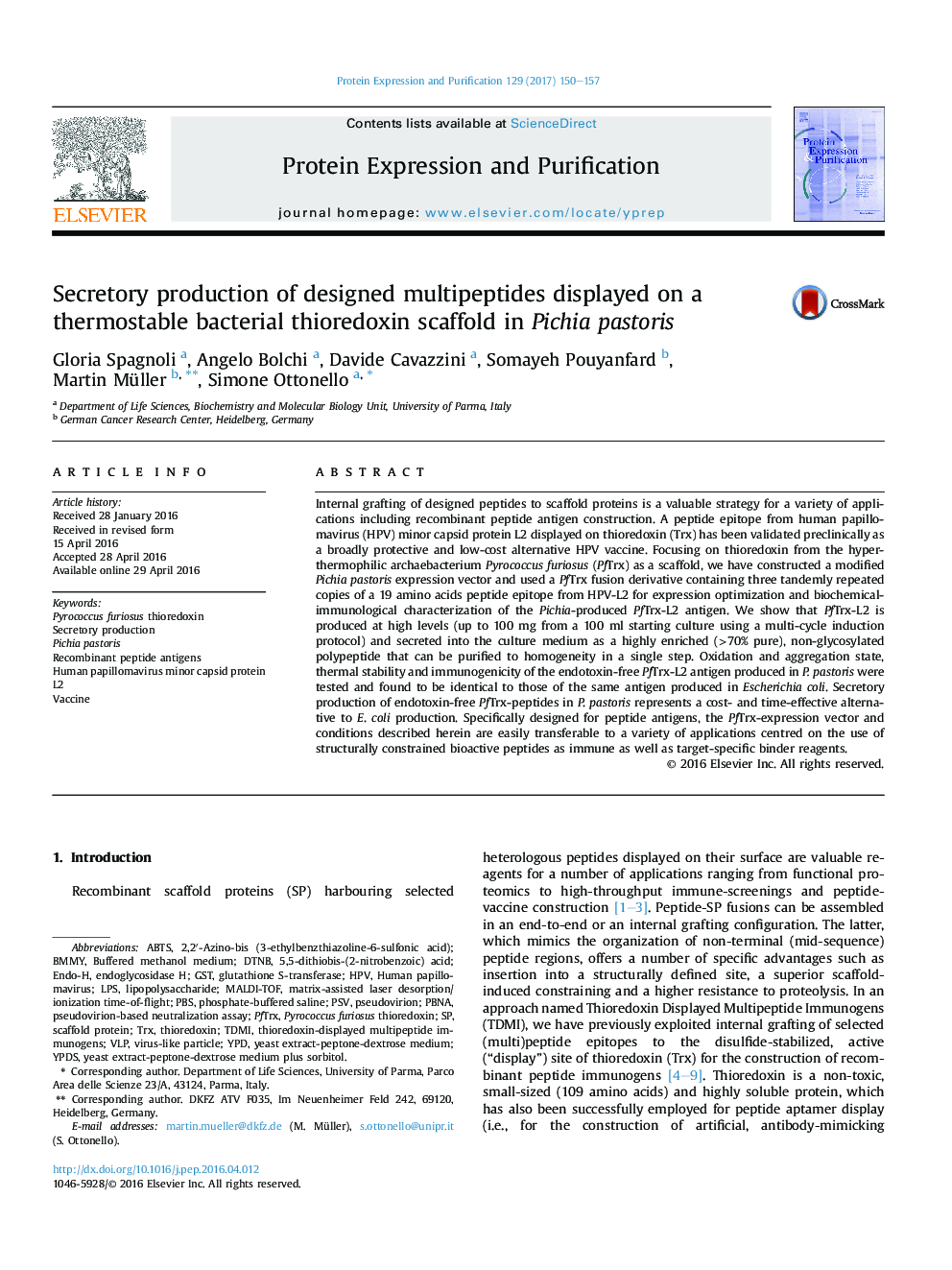| Article ID | Journal | Published Year | Pages | File Type |
|---|---|---|---|---|
| 5516178 | Protein Expression and Purification | 2017 | 8 Pages |
â¢One-step purification of secreted thioredoxin-displayed multipeptides expressed in Pichia pastoris.â¢Application testing to a peptide epitope from human papillomavirus minor capsid protein L2.â¢Immunogenicity of the Pichia-produced, endotoxin-free thioredoxin-L2 antigen.
Internal grafting of designed peptides to scaffold proteins is a valuable strategy for a variety of applications including recombinant peptide antigen construction. A peptide epitope from human papillomavirus (HPV) minor capsid protein L2 displayed on thioredoxin (Trx) has been validated preclinically as a broadly protective and low-cost alternative HPV vaccine. Focusing on thioredoxin from the hyperthermophilic archaebacterium Pyrococcus furiosus (PfTrx) as a scaffold, we have constructed a modified Pichia pastoris expression vector and used a PfTrx fusion derivative containing three tandemly repeated copies of a 19 amino acids peptide epitope from HPV-L2 for expression optimization and biochemical-immunological characterization of the Pichia-produced PfTrx-L2 antigen. We show that PfTrx-L2 is produced at high levels (up to 100 mg from a 100 ml starting culture using a multi-cycle induction protocol) and secreted into the culture medium as a highly enriched (>70% pure), non-glycosylated polypeptide that can be purified to homogeneity in a single step. Oxidation and aggregation state, thermal stability and immunogenicity of the endotoxin-free PfTrx-L2 antigen produced in P. pastoris were tested and found to be identical to those of the same antigen produced in Escherichia coli. Secretory production of endotoxin-free PfTrx-peptides in P. pastoris represents a cost- and time-effective alternative to E. coli production. Specifically designed for peptide antigens, the PfTrx-expression vector and conditions described herein are easily transferable to a variety of applications centred on the use of structurally constrained bioactive peptides as immune as well as target-specific binder reagents.
